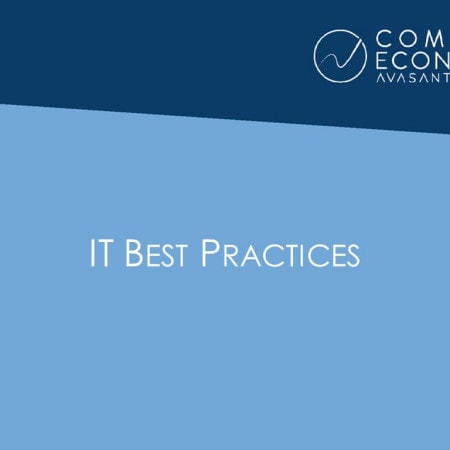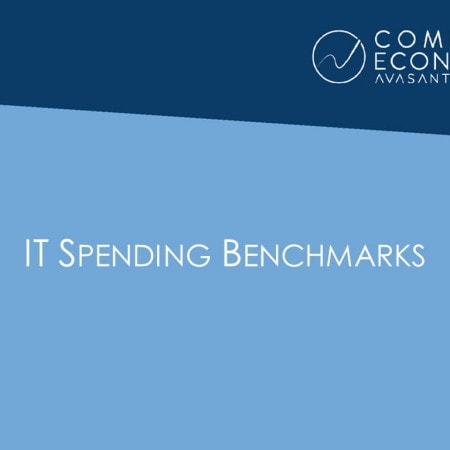-

Current Trends in CRM Adoption and Customer Experience
Rising customer expectations, current economic conditions, and new technologies are driving increasing adoption of customer relationship management (CRM) systems. This study helps IT executives make better decisions regarding CRM investments by analyzing current trends in CRM adoption along with the associated risks and rewards. We show the three-year trend in the CRM deployment as well as the worldwide adoption and investment rates by sector, organization size, and geography. We also measure CRM customer experience in terms of the success rates for return on investment (ROI) and total cost of ownership (TCO). Finally, we assess CRM investment levels for new implementations and improvements to existing systems. We wrap up with our recommendations for improving the ROI of CRM. (19 pp., 12 figs.) [Research Byte]
June, 2012
-

Open Source Business Applications: Adoption and Participation Trends
In this study, we examine adoption trends and the economic experiences of organizations that have deployed open source business applications. The analysis addresses current adoption levels, current investment activity, return on investment experience, and total cost of ownership experience. We also examine variations in adoption and investment levels by organization size and industry sector. Finally, we look at a related issue: the number or organizations actively contributing to open source development projects. We conclude with key considerations for IT managers who are assessing the suitability of open source business applications. (7 pp., 10 figs.)[Executive Summary]
September, 2008
-

Software On-Demand: Lowering the TCO of Business Systems
Software on-demand vendors, such as Salesforce.com, Netsuite, and Employease, deliver software applications as a service instead of selling them on a license basis. This report summarizes the history and basic concepts of software on-demand and analyzes its potential to radically reduce the total cost of ownership for software buyers and the operational costs of software vendors. It also outlines the challenges that software on-demand faces in gaining widespread adoption.
May, 2005
-

Guiding Successful Business Intelligence Initiatives
Today, enterprises rely on many systems to run the business: SCM, ERP, CRM, POS systems, call centers, and e-commerce and online customer touch-points. Each of these systems produces volumes of data about customers, transactions, sales, inventory, and human resources. The problem becomes how to amass this data and turn it into actionable information for decision makers across the enterprise. This is the focus of the business intelligence (BI) environment, enabling an enterprise to wring greater business insight from the increasing volumes of data. This article looks at the technology that drives the business case for BI and at how this technology is integrated into business decision making.
November, 2004
-

How Does Data Quality Affect Your Business?
As IT professionals, our first introduction to the notion of data quality was the adage: "garbage in, garbage out." But, today, the data quality equation is much more complicated than this. Today, data is vital to the business. Data is key to making decisions at all levels, negotiating with suppliers, solving problems, complying with government regulations, and many other facets of operating an enterprise. This article reveals some of the key sources of data quality issues and how you can resolve them. Click here to purchase. - $125
October, 2004
-

Using Technology to Create Value for the Enterprise
As IT budgets begin to increase more than they have over the past two to three years, CIO's are moving from a mode of holding budgets tight to one of identifying strategic opportunities for the enterprise, prioritizing projects, and proving a value proposition in a cost conscious environment.
March, 2004
-

Meet the Challenge of Achieving Positive Returns With CRM
Traditional implementations of CRM are based on the concept of sales force automation. Often packaged as stand-alone applications, this form of CRM just does not solve real world problems. Integrating CRM with the remainder of the enterprise is essential in making it a viable product.
April, 2003
-

B2B Online Usage by Manufacturing Companies (November 2002)
Only 10 percent of the manufacturing plants surveyed were making online payments to vendors in 2000. However about 30 percent plan to be conducting business in this manner by year-end 2002.
November, 2002
-

CRM Shortfalls
While business executives generally agree that technology has helped them strengthen relationships with their customers, more than half (55%) say that Customer Relationship Management (CRM) shortfalls can be attributed in part to inadequate support from top management.
October, 2002
-

Get on Top of Supply Chain and Customer Management Applications
Supply chain difficulties and customer relationship management (CRM) missteps directly impact the corporate bottom line. Solutions center around sharing information through new partnerships conducted through the Internet. But, accomplishing this goal requires an unprecedented openness and trust among participants.
September, 2002
-

Opportunity Management Systems
The purpose of an Opportunity Management System (OMS) is to aid professional service providers in managing complex, confidential, and often sensitive business relationships between the provider and clients. To accomplish this, an OMS must be able to create intelligence in a form that can readily be used by staff with account management responsibility.
August, 2002
-

Trivial Online Secret Sharing: A Secret Splitting Scheme Supporting General Access Structures
In our last analysis, we discussed a variety of secret sharing techniques. In this analysis, we will discuss a specific secret sharing scheme. The scheme was developed by Christian Cachin and published in 1995. It overcomes some limitations found in earlier techniques.
August, 2002
-

Turbulence Ahead in the ERP Market (Nov 2000)
The promises of the ERP revolution of a few years ago have too often been realized as expensive, bulky software coupled with painful rollouts and often wrenching organizational realignments. Consequently, ERP vendors are under the gun. Several have faced hard economic times along with rapid changeovers in the executive suites and disappointed customers. The major ERP suppliers are also facing a wakeup call from nimble e-commerce competitors such as Ariba, Clarify, Commerce One, I2 Technologies, and Siebel Systems to say nothing about their traditional adversaries, IBM and Microsoft. Application service providers are yet another threat to ERP providers' welfare.
March, 2002
-

How to Make CRM Financially Viable
The purpose of customer relationship management (CRM) is to provide a dialog between your customers and your business. This goal implies that an organization should commit itself to major internal changes because the key to successful CRM implementation is not limited to IT issues. Rather, success depends on interdepartmental cooperation and superb leadership. The main reason that many firms have failed in their CRM deployments revolves around failing to grasp these concepts.
January, 2002

 Grid View
Grid View List View
List View